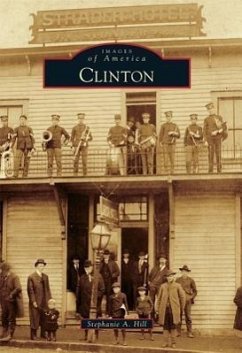Established in 1802 as the county seat of Anderson County and originally named Burrville in honor of Aaron Burr, the first-term vice president under Thomas Jefferson, Clinton was renamed by the Tennessee legislature in 1809. The arrival of the railroad after the Civil War made large-scale mining of coal the areas main industry for nearly a century, and the resulting growth in population was one of the deciding factors in the federal governments building of the Secret City of Oak Ridge, as part of its World War II Manhattan Project, just 16 miles to the southwest. From the late 1880s until the completion of the Tennessee Valley Authoritys Norris Dam in 1936, Clinton was also a major center of the Clinch River freshwater pearl trade. Construction of the dam altered the rivers temperature, which killed off the pearl industry, but the creation of Norris Lake became the basis on which the areas tourism industry was founded.
Bitte wählen Sie Ihr Anliegen aus.
Rechnungen
Retourenschein anfordern
Bestellstatus
Storno

